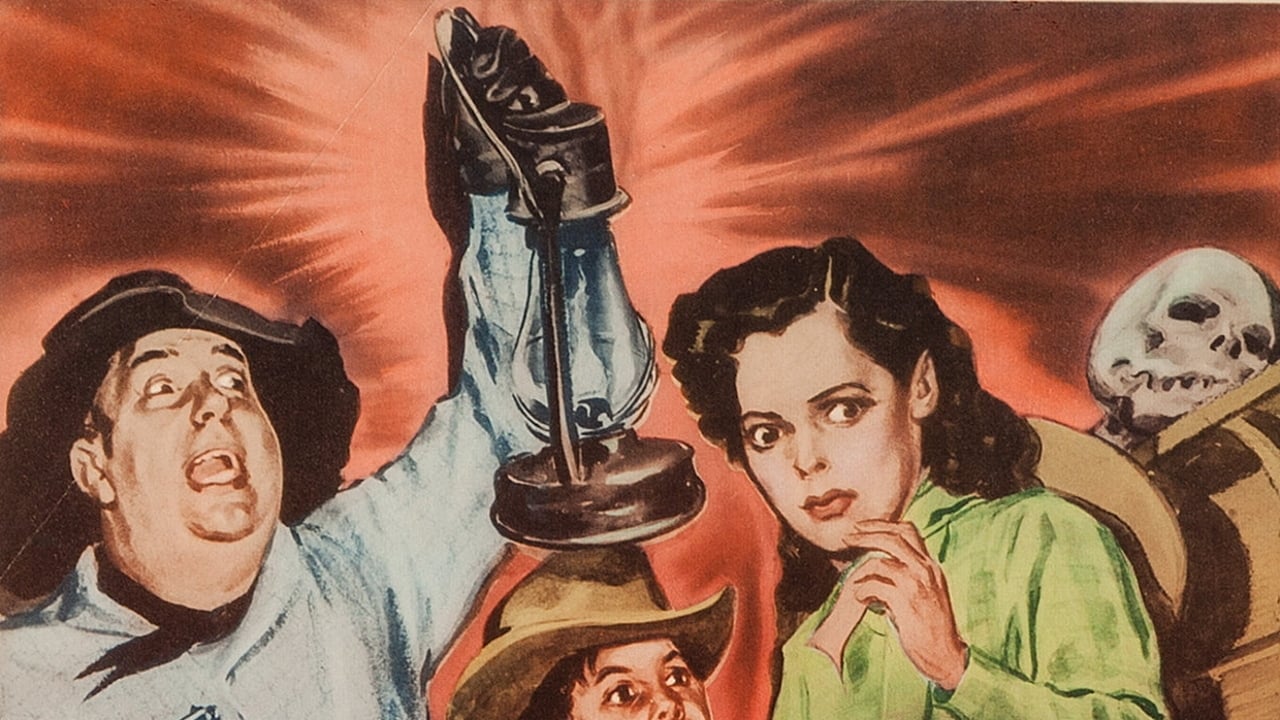Michael O'Keefe
No secret that Columbia Pictures recycles old footage. Cowboy idol Charles Starrett as Steve Woods and masked champion The Durango Kid teams again with his sidekick Smiley Burnette. The plot is thin, but enough to sustain a Saturday morning crowded theater. Looking for gold in a deserted town, Steve and Smiley along with the Dusty Creek sheriff(Stanley Andrews)discuss the case of Bill Donner(George Chesebro), who double crossed his partners for their share of gold. Doris Donner(Mary Ellen Kay)is available, but has no clues to where the gold was hidden. The only one that knows is the aged Bill Donner, sitting in jail with the loss of his eye sight. Flashbacks (previous footage of Durango Kid movies)extend and holds STREETS of GHOST TOWN together.Other players include: Frank Fenton, Don Reynolds and Ozie Walters.
Mike Newton
I would like to comment on the previous blogs about the re-use of old footage. Yes, there was a lot of stock footage used in the Durango Kid films, just as there had been in the Lash Larue series. This had nothing to do with television, since TV's influence didn't make an impression until the early Fifties. Post-war production costs and the tight budgets which governed these films were to blame. Actually, it made sense. Why would you shoot new footage of a masked rider on a white horse again and again when you already had footage on this? My friend Barry Shipman, who wrote the Durangos, told me that at the end of the series in 1952, he was simply writing continuity so that the old footage and the new footage could be matched up. What the hey? The kids didn't care about story lines. Just keep the Durango Kid riding and shooting. The comment about the hokey comedy of 1950 amused me. Burnette was doing the same comedy on Petticoat Junction, but there was a laugh track added to tell the audience when to laugh. We didn't have the laugh track at the movies so we had to decide for ourselves what was funny and what wasn't. Also, note the printed narratives at the beginning of every Durango with no off screen narrator reading. Judging from those words, the scriptwriters must have thought we were pretty intelligent. Could the kids today read that without help?
classicsoncall
By the time "Streets of Ghost Town" came out, Columbia was using more and more stock footage to keep expenses down, and it's quite evident here, particularly in those scenes with the voice over narration by Charles Starrett. The film also chews up a lot of time with endless back and forth riders on horseback and it's share of stampeding cattle. But for young matinée movie fans of the 1940's and '50's, this was the kind of action that kept all the young fans happy, both boys AND girls.I was intrigued by the location of the story, near Border Plain and the wild country of The Spur. That sounds really cool, but I wonder if there really is such a place; Google gives you over a million hits, and I don't have that much time. With the ghost town theme, I thought the picture would get a little more mileage out of Smiley Burnette reacting to ghostly phenomena, but there was only that single Donner appearance in the window, and not too scary at that.As for Smiley, he only gets to do one musical number in the picture instead of his usual three or four, in fact the first is done by Ozie Waters and his Colorado Rangers. Then there's that curiously named boy actor, Little Brown Jug as Tommy Donner; I really need to get to the bottom of that nickname. His real name, Don Reynolds is credited here, but I've seen pictures that list him only as Little Brown Jug.If you're a big time Durango Kid fan, you might think you've seen this picture before, there was a 1946 Durango film titled "Landrush", also taking place in 'The Spur', and having similar elements, right down to digging trenches to fight the fires set by the villains. My guess is that if you watched them back to back, the land rush scenes from the earlier film are recycled here. As far as other 'B' Westerns offering a 'ghostly' theme, I would recommend Lash Larue's "Ghost Town Renegades" from 1947, where the comedy antics are handled by Fuzzy St. John.
lastliberal
I found it interesting that this film was not original, but used stock footage from previous westerns: "Gunning For Vengeance" and "Landrush." I always suspected that a lot of the shooting and chasing in westerns appeared the same, but I never realized that they actually used the same film. Roger Corman would be proud.I also found it interesting in this particular western the use of the protection racket by the outlaws. Agasin, something I had never seen previously. Using stampeding horses or cows to intimidate and collect protection money. Cowboy Mafia? The cowboys here, including the Durtango Kid, really need to take some shooting lessons. Bullets were flying all over the place and no one got shot./ The only time anyone did get shot was at point blank range from 3-4 feet. Interesting.


 AD
AD


